PROPOSITIONS: 'AFTER IMAGE' (last updated 11:33am, April 20th, 2009)
"What are they training for - turning hamburgers at Mac Donalds or encouraged in the production, shuffling and trafficking of images, both equally productive for our society? Rather than producing pre-fabricated values and presentations, the question of why making an image at all needs to be explored, keeping in mind: "Image coming soon!". -Fia Backstrom, Kiss My Ass, and other revolutionary relations in art education (2008). Published in Dear Dave.
(i) Is there any rest from images? In abstraction and representation? The attempt to deny the image is but just the most instinctual of all responses we can have to the image: shut it off. I am a bit confused to what you mean by shutting off the image? A way to think about it is like turing off the lights. Reading into it or not? Overlooking its formal qualities? Or it’s purpose of depicting something?Both form and message, the next line answers states this. Destroy all representation, starting with the visual, eventually coming to the core it is, the message, the data, the meaning. History has shown us that that is not on option, the battle to shut off the image was fought long and hard by the artist of yesterday, and although at first it seemed like victory, we were only fooling our selves -abstraction itself has became an image (as in the 1800’s photographer trying to utilize photography in an artistic way rather than just for recording purposes? Later by man-ray Laszlo m. naghy?). Not really, When I say image I mean any image, whether the image is a document or and artistic image, both are the “images”. It stands victorious, flexing it's muscle, showing off it's vacuous power.
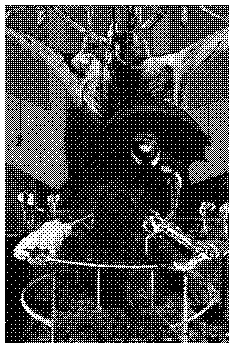

lleft: Francis Bacon, Painting, 1964. Museum of Modern Art.
right:
Peter Doig, Figure in Mountain Landscape II, 1998-99. Philadelphia Museum of Modern Art.
"A canvas in no blank surface. It is already cluttered up with cliches, even if one can't see them. The painters task consits in destrying them"-deluze [1]
(ii) Francis Bacon was obsessed with images, this obsession stuck with him like his shadow -"these images torn from the world [...] join with him in the silent dialogue as he paints relentlessly"[2] "An entire battles takes place on the canvas between the painter and the givens."[3] This is the only the prepatory work as Delueze calls it, these images are present on the canvas even before they are painted, "the act of painting apears as an afterward, and apres-coup ("hysteresis") in relation to the work." [4] Then the action of painting unfolds in Bacon's case with scrubbing, sweeping, or wiping the canvas, what he calls "grafting" them and so on.[5] But I believe it is thorough his violence, that they recieve more power, and so they return. "Scratching not at your door but at your eyes. Listen to me, hear me, see me! Pay attention!"[6] at the same time offer us little clue of their true purpose, do they have your best interest at heart, these images?" [7]
So what choices do we have then for dealing with the image besides trying to shut it down? Still not sure what you mean by shutting down the image… Later, when I think about what "shutting off" means, I think about "making something completely incoherent".
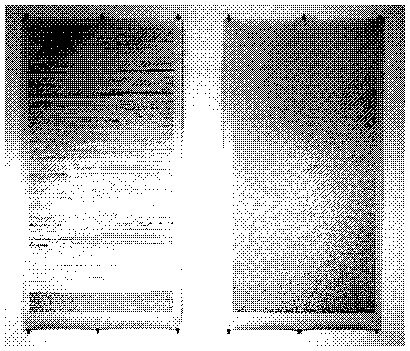
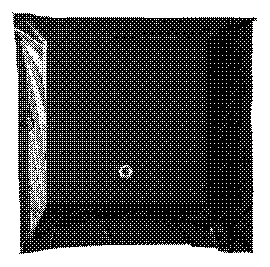
Jon Meyer, Ten thousand squiggles (diptych) 2007, Two inkjet prints, each 200 x 100 cm. right: untitled 2009
I think we must pose the question "what is an image?" more carefully.
It is only the viewer who perceives meaning in an image. Each viewer may perceive a different meaning. This means: the most fundamental quality of an image, what an image is, what differentiates the image
from other orders of things, is this subjectivity of its interpretation. In other words, an image must ask a question. An image is an indeterminacy (Ranciere).
For example when I see a toilet, it is not an image, it is an object I know and understand how to use. It poses no questions. I am not required to interpret a toilet. However, the moment Duchamp placed a
toilet in a gallery, he destabalized its meaning. As a viewer I must make a subjective decision: how to understand a toilet in a gallery. Duchamp converted a toilet from an object into an image.
In this sense words are images because they must be interpreted.
To "shut down images", then, means eliminating questions, to remove subjectivity, to halt indeterminacy, to create a world in which there are only things.
You could say argue that the goal of advertising, in that case, is to shut down images, to replace images with a uniform response of desire.
These propositions wouldn't be complete without some of the framework exposed, that is the system in which images belong, and it's parts, namely the image, and the image maker:
SYSTEM EQUASIONS:
IMAGE= WHAT IS DESIGNATED TO BE LOOKED AT. CONTAINING WHAT YOU WISH, IF YOU FOLLOW BARTHES: IMAGE-MESSAGE=(?) A. THE LINGUISTIC MESSAGE B. CODED ICONIC MESSAGE C. NON-CODED ICONIC MESSAGE[8]. IMAGE-MAKER=THE ONE WHO MAKES THE IMAGE. AT ONE POINT IT WAS DECIDED ENOUGH IS ENOUGH WITH THE IMAGE, BUT NOW WE ARE BACK AT SQUARE ONE. IMAGE-VIEWER=ONE WHO SEES THE IMAGE. WITHOUT THE VIEWER THERE IS NO IMAGE TO BE SEEN. IMAGE-SYSTEM= A SYTEMS MADE UP OF THE PARTS ABOVE. LIKE ANY OTHER SYSTEM, WHICH LOCKS IN THE ABOVE PARTS.
The evolution of the image, a paraphrasing from Jean Baudrillard's Simulacra And Simulation [9]:
1. First order, associated with the pre-modern period, where the image is clearly an artificial placemarker for the real item.
2. Second order, associated with the industrial Revolution, where distinctions between image and reality breaks down due to the proliferation of mass-produced copies. The items' ability to imitate reality threaten to replace the original version.
3. Third order, associated with the postmodern age, where the simulacrum precedes the original and the distinction between reality and representation break down. There is only the simulacrum.

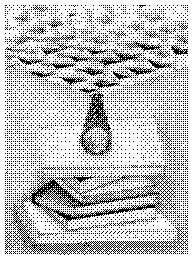
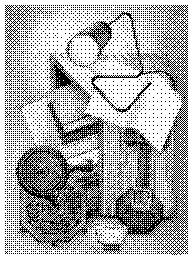
left: John Monteith, Undercurrent 10, 2007 middle and right: Peggy Tan, Loose Associations #2 & #5, 2008
(1) HEAD OF SNAKES. We can look away, and in looking away we find different purposes. For example at the edge of image, in the non-image zones we locate the residual, the aura of the image. We can also look to the after-image just as one would construct a pinhole viewer to look at a solar eclipse -at a safe distance. The concern is not for the original image but the reflection of the image, a main aspect of the ego, person-image. Take that residue, study it, like a forensic scientist gathering evidence against the image. We can also look away from the physical image itself and look for references, reasons to why that certain image is what it is. It may as well be a response to some outside factors. Is that ‘residue’ a main essence, perhaps a ‘punctum’ (barthes) that remains imprinted in out memory? You are getting tto my point- the strategy I am referring to in this paragraph in Barthes terms: To look at the punctum directly to bypass the image? I guess Barthes would say that the aura/punctum is the “after image”. Is the residue what remains with the viewer? Yes, the residue that has bypassed the image as it’s means of communication. It’s confusing because technically it is not something that ‘remains’ or ‘left behind’ like residue, but the directly entering into the memory/mind.
Can art be about aura without the image (or word), going directly in the brain, bypassing the influence of the eye?
(2) IF “WORDS ARE IMAGES.”AND “LANGUAGE IS A VIRUS FROM OUTER SPACE”-BURROUGHS[10] THEN? One can also find a different purpose for the image other than that of being reflected or referenced, it's existence can be detoured -using it as it uses us: a tool for divination, a sign who's representation is discarded after it's served it's purpose. For some reason I still feel like we make the image, we use the image. The only way I suppose it would be using us is if the image stirs confusion and attracts us towards looking at redundant “ornamentation” rather than the clear message. Yes, we definitely do ‘make the image’”(it originates from us) but at soon as we make the image, it starts to control the dialog, it is confining in that sense –like a prison. Prisoners of the mediocre/concrete image (mediocre in the way it communicates: with it, we can never fully communicate with out entropy in the message. Similar to William Burroughs ‘language-is-a-virus-enslaving-us’ idea (Nova Trilogy). It’s interesting to note that in Nova trilogy he uses “cut-up” and “fold-in” techniques, similar to a project I was working on- but here I am applying them to images not language (both are interchangeable: “we may forget that a written word is an image” Burroughs.) Burroughs clearly goes to a great deal to prove his L.A.V idea in a anthropological way by saying there might have been viruses that caused our ability to speak, I’m certainly not going that distance, its more of a ‘what-if’ scenario. *I meant detourned, in reference to situationist detournment, but I wasn’t sure if you can say detourned or just stick with English detour.
(3) DIVIDE INFINITLY. The image can also be expanded, multiplied exponentially, thus forcing it to loose it's power in a multidimensional (but non-hierarchical) world, one encompassing time and imprisoning all images, from their birth to their death. When does the image die? When it is set on a continuum of motion and time (finite or infinite): Multiplied in time maybe? I didn’t mean multiplied by a copier, but that too could be a strategy. It can also die by disempowering it through confusion of its self- just like the art object was disempowered by Duchamp and his ready-mades - if anything can be art then anything can be an image. What is allowing the image to unravel/exist/take place between point A and point B? Not sure what you mean but let’s say that an image in Point A can exist, and can also be understood by it’s post-A existence and it’s pre-A existence. Does it live through multiplication/reproduction by which it could take different shapes and forms throughout numerous zones (shared with the world) or does it become obsolete or iconic through these terms? Not necessarily though reporduction, Banjamin’s idea states that through mechanical reproduction we are removing of the aura, a irrevocable action. The way I read Duchamp is that the aura is at your finger tips and, although mechanical reproduction can kill it, it can be reactivated at any point.
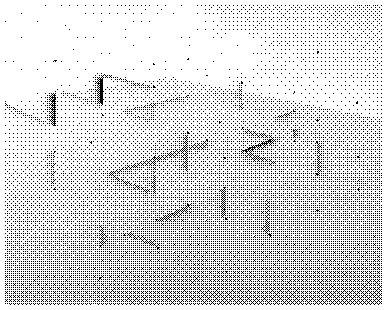

left:Suzanne Song 1...39, 2007 right: Kelsey Harrington, Abstract Connections 2009
(4) TURN IT DOWN. Still there are endless possibilities, perhaps shutting down the image is to much of an irrevocable decision. Thus we can take Mashall McLuhan’s suggestion, to expand our controls, much like knobs on a mixing board, and tune into the "sensory thresholds of our being"[11], that would mean to hear it, smell it, taste it, touch it. Like primitive and "pre-alphabet people" we can live in the "acoustic, horizonless, boundless [and] olifactory space, rather than the visual space".[12] We don't have to be prisoners of the images' single perspective. Are you proposing a different way to look at an image? By analyzing it through different perspectives? If we were to replace “hear it, smell it, taste it, touch it." With different critiquing techniques (if there are any) what would they be? I rather say a new way to ‘encounter’ the image instead of a new way to ‘look’ at the image. And yes, via different perspectives different senses- this is McLuhan’s suggestion, I don’t know how to critique it, I’ve never tried it. ... But now coming back to this question on "how to critique it", my impulse is to say to analize it's level of effectiveness in what it wishes to represent.
Guy Debord's Unitary Urbanism also comes to mind when thinking of McLuhan's enviromental controls. With research and games like psychogeography and Unitary Urbanism, Debord hopes to break the spectacular bind of capitalism [13], which in Debord's theory is controlling society via the spectacle. One difference being McLuhan's belief that "electronic circuitry is recreating this multiple dimensional space"[14], which I think both Boudrillard and Debord * might argue the contrairy: through electronic circuitry, the main catalyst in the distribution and** creation of simulacra and spectacle*** second perhaps only to mechanical reproduction, is creating a deeper sepration from the original primitive multi-dimensional space and life today. But I shouldn't conflate the spectacle with the image, as this will only complicate things. To me the spectacle is a highly mutated form of the image.
"Unitary Urbanism first becomes clear in the sue of the whole of arts and techniques as means cooperating in an intergral composition of the enviroment. [...] Unitary urbanism must control, for example, the acoustic enviroment as well as the distribution of different varieties of drink or food."-Towards a Situationist International, Guy Debord 1957
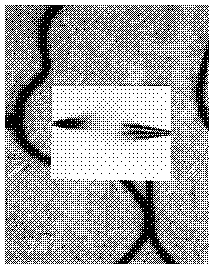

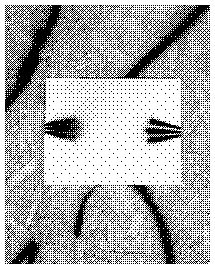
above:Arthur Ou Light Leak 1-3, 2009
[1] Original Delueze observation cited by Herve Guibert, "La peinture enflamme l'ecriture," Le Monde, December 2, 1981. Repritned in Anne Baldasarri (2006). Bacon Picasso: The Life of Images Paris: Flammirion 2005.
[2] Anne Baldasarri, (2006). Bacon Picasso: The Life of Images. Paris: Flammirion 2005. p.18
[3] Deleuze, Gilles (1981). Francis Bacon: The Logic of Sensation. Paris: Éditions de la Différence. English translation by Smith, Daniel W. (2003) Minnesota: U of Minnesota Press. p.81
[4] Deleuze, Gilles, ibid.
[5] Deleuze, Gilles, ibid.
[6] Atwood, Margaret (2006). "Images Drift" introduction to Robbins, Kadee (2006). Peter Doig: Works on Paper. Italy: Rizzoli.
[7] Atwood, Margaret, ibid.
[8] Roland Barthes. Rhetoric of the Image. Image, Music, Text. Ed. and trans. Stephen Heath. New York: Hill and Wang, 1977. 32-51.
[9] Hegarty, Paul (2004). Jean Baudrillard: live theory. London: Continuum.
[10] Burroughs, William S. (1970). "The Electronic Revolution" (essay). West Germany: Expanded Media Editions.
[11] McLuhan, Marshall (1967) Medium is the Massage: An inventory of Effects. New York: Bantam. p.68
[12] McLuhan, Marshall (1967) ibid. p.56
[13] Claire Bishop (2006) Participation. London: White Chapel
[14] McLuhan, Marshall (1967) ibid. p.56
*,**,***crossed out because DeBord has written that this is not what defines the spectacle: "#4 The spectacle cannot be understood as an abuse of the world of vision, as a product of the techniques of mass dissemination of images. #5 The spectacle cannot be understood as an abuse of the world of vision, as a product of the techniques of mass dissemination of images. It is, rather, a Weltanschauung which has become actual, materially translated. It is a world vision which has become objectified." Spectacle of Society, Guy Debord, 1967. More along that tangent if you wish:
#18 Where the real world changes into simple images, the simple images become real beings and effective motivations of hypnotic behavior. The spectacle, as a tendency to make one see the world by means of various specialized mediations (it can no longer be grasped directly), naturally finds vision to be the privileged human sense which the sense of touch was for other epochs; the most abstract, the most mystifiable sense corresponds to the generalized abstraction of present-day society. But the spectacle is not identifiable with mere gazing, even combined with hearing. It is that which escapes the activity of men, that which escapes reconsideration and correction by their work. It is the opposite of dialogue. Wherever there is independent representation, the spectacle reconstitutes itself. - Debord, ibid.
TO ADD TO THESE PROPOSITIONS EMAIL EDITORS@PETITEMORT.ORG